6 Types of Grass in Arizona (With Pictures)
-
Shea Cummings
- Last updated:
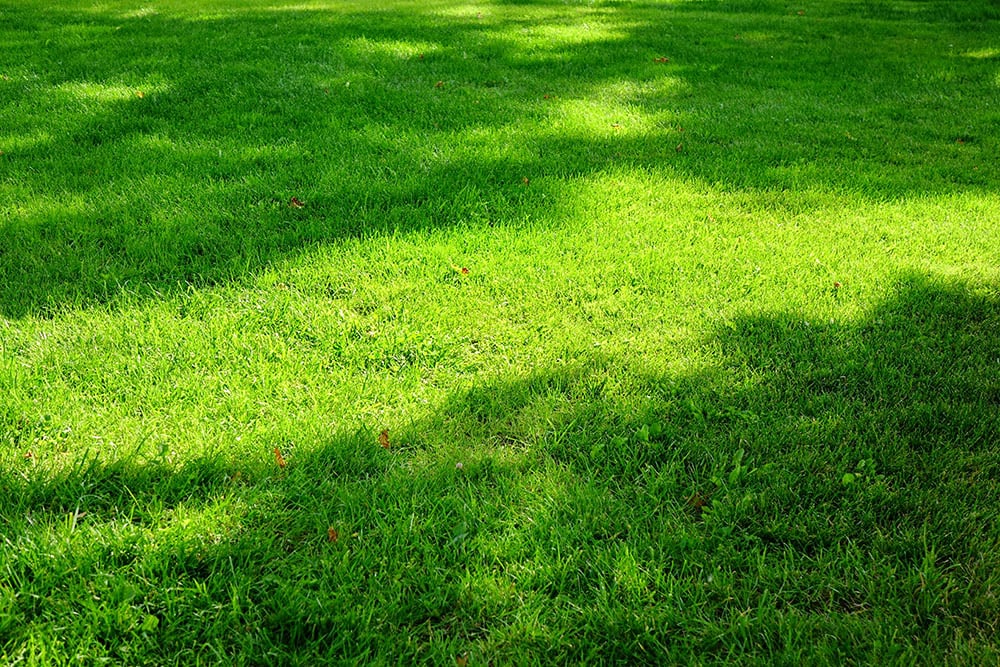
Until you become a homeowner, you may have never given any thought to the fact that there are various types of grass. Each has a slightly different look or color, and some are more resistant to various things than others.
We’ve gathered a list of six top choices for your Arizona lawn. And we’ve also included a small guide on choosing the best grass for your yard.
The 6 Top Choices for Your Lawn in Arizona
1. Midiron

| Texture: | Medium-course |
| Color: | Blue-green |
| Shade Tolerance: | Low |
| Drought Tolerance: | High |
| Mowing Height: | ¾” to 1-½” |
Arizona homeowners looking for drought-tolerant grass that is low maintenance should consider midiron. It’s a hybrid bermuda grass that can handle a lot of foot traffic. One thing that sets midiron apart is the lovely blue-green color. Soil quality isn’t a big issue for this grass either; it will grow well even in sandy or clay soils.
When it goes dormant through the winter, it loses that color. However, if you use perennial ryegrass for overseeding, the color and life come back quickly once it gets warmer out.
2. Blue Grama
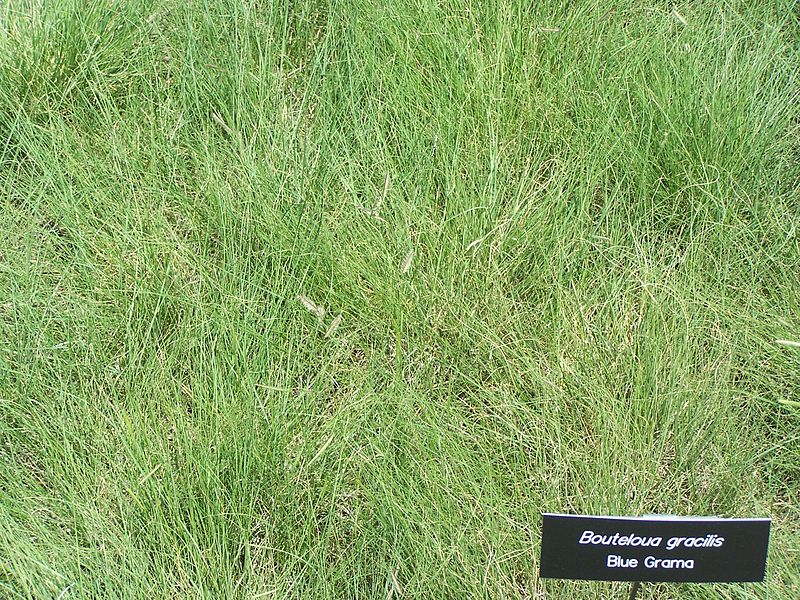
| Texture: | Rough-textured |
| Color: | Green to blue-green |
| Shade Tolerance: | Low |
| Drought Tolerance: | High |
| Mowing Height: | 4″ |
Blue grama is an excellent grazing grass and is commonly found in the pastures of Arizona farms. It can grow well in almost any soil without much care, which is why it’s a common grazing grass.
But if you’re looking for grass that requires minimal mowing or watering—it can survive on as little as 7 inches of rain in a year—then blue grama is worth considering. However, its ideal height is around four inches, so if you prefer a tightly mowed lawn, this one may not be for you.
3. Bermuda Grass
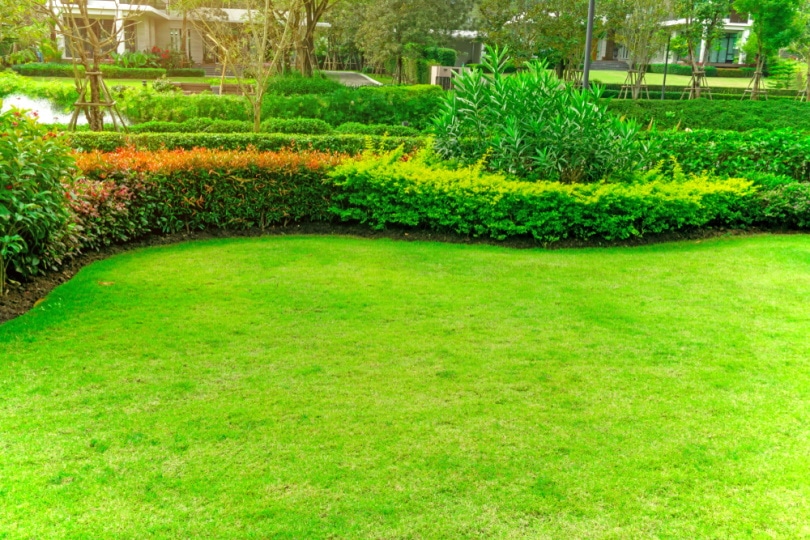
| Texture: | Dense |
| Color: | Depends on the cultivar |
| Shade Tolerance: | Low |
| Drought Tolerance: | Reasonable |
| Mowing Height: | 2″ |
Originally from Africa, Bermuda grass is also known as south grass. If the temperatures remain above 60°F (15°C), this grass will remain lush and green all year round. Otherwise, it will go dormant through the colder months.
Bermuda grass is durable grass that grows well in most soil types. One thing to keep in mind is that it grows fast. So, it requires lots of mowing maintenance throughout the season. But the bonus to this fast growth is that it withstands heavy traffic.
4. Palmetto St. Augustine
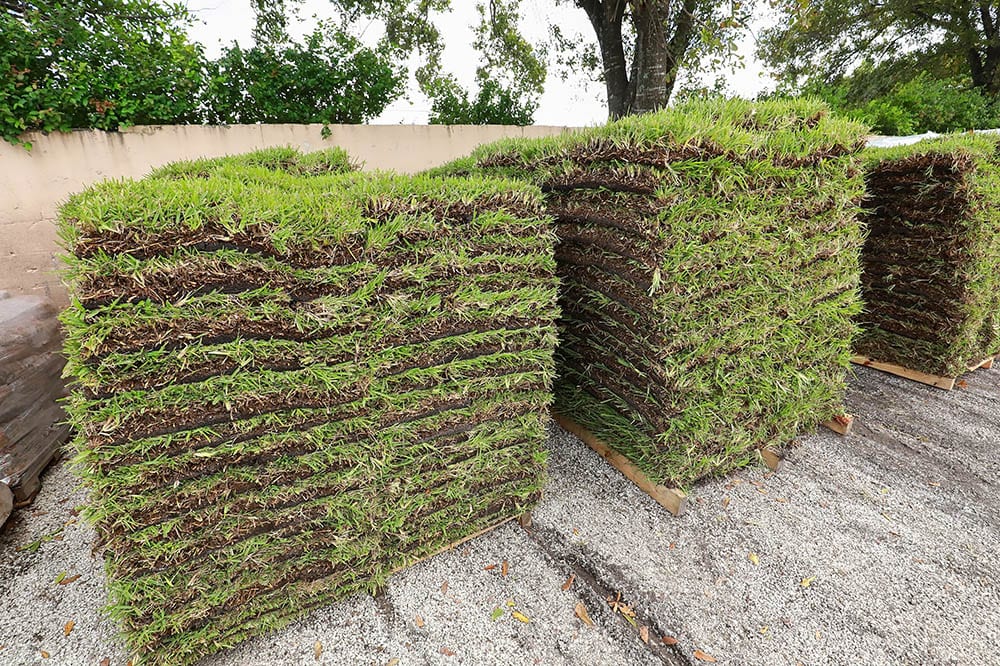
| Texture: | Smooth |
| Color: | Blue-green |
| Shade Tolerance: | Reasonable |
| Drought Tolerance: | High |
| Mowing Height: | 1″ to 3″ |
Palmetto St. Augustine is a common grass variety found in coastal and desert areas due to its heat and salt tolerance. In some places, it’s known as carpet grass because of its smooth, even texture. It requires minimal mowing throughout the year and looks great when mowed between one and three inches.
The one downside to this variety of grass is that it’s susceptible to some pests like grubs and sod worms. So, it may need an insecticide treatment a couple of times a year. Weeds can also be an issue if not dealt with right away.
5. Tifway 419
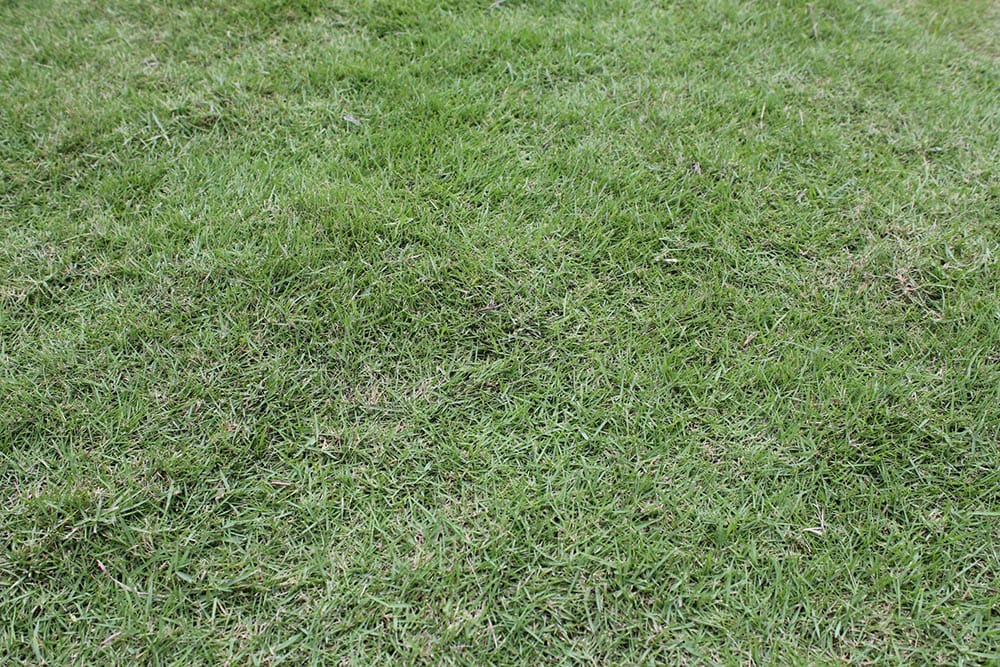
| Texture: | Fine |
| Color: | Dark green |
| Shade Tolerance: | None |
| Drought Tolerance: | Reasonable |
| Mowing Height: | ½” to 1-½” |
Tifway is a Bermuda grass-hybrid. It’s a reasonably high-maintenance grass that needs to be mowed about once a week to ensure it stays green and lush. Even with frequent mowing, you don’t want to mow it too short because the bottom of the blades is brown, so it looks dead. This is hard on the grass, but a bit of extra water will typically bring the green back.
Now, even though it’s high maintenance, tifway is durable. If it’s allowed to grow a little longer, it actually provides some cushioning. It’s a common variety to see on sports fields or golf courses.
One thing to keep in mind with tifway is that it has almost zero shade resistance. So if your yard is shaded from the sun, it won’t be an ideal choice of grass.
6. Buffalo Grass
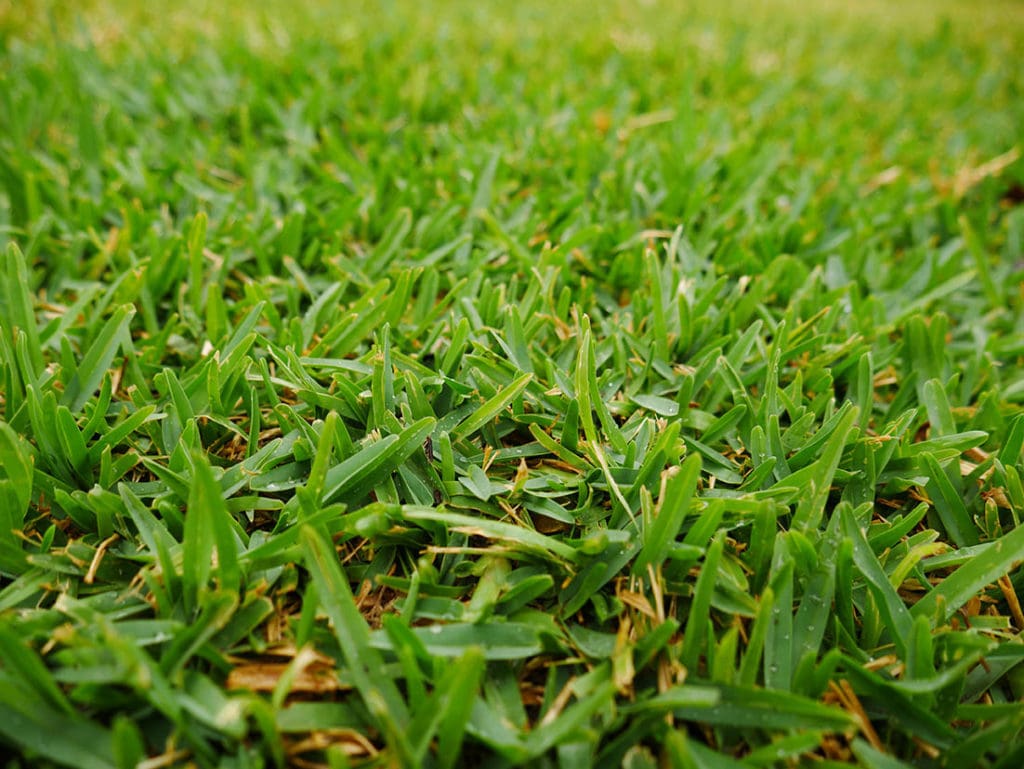
| Texture: | Fine |
| Color: | Blue-green |
| Shade Tolerance: | Low |
| Drought Tolerance: | High |
| Mowing Height: | 2″ to 3″ |
Originally buffalo grass was a native to the Great Plains, but because of its tolerances, it thrives in Arizona’s hot, dry climate. It’s also the most cold-tolerant compared to the rest of the warm-season grasses on this list.
Buffalo grass is a great candidate if you’re looking for low-maintenance grass. However, keep in mind that it generally goes dormant early and doesn’t return quickly from overseeding. Also, because it’s not a very dense grass, it’s susceptible to weeds. That’s easily solved by using an herbicide with your fertilizer and hand-pulling weeds as they come up.
Choosing the Right Grass for Your Lawn
Before seeding your lawn, there are several things to think about to ensure that it looks the best it can.
- Growing factors: Consider things like how much shade the yard gets and how much foot traffic it will get.
- Determine soil type: Some grass seeds aren’t picky, but others need specific soil to thrive.
- Local varieties: Doing some research on what varieties and species are growing well in your area will be helpful.
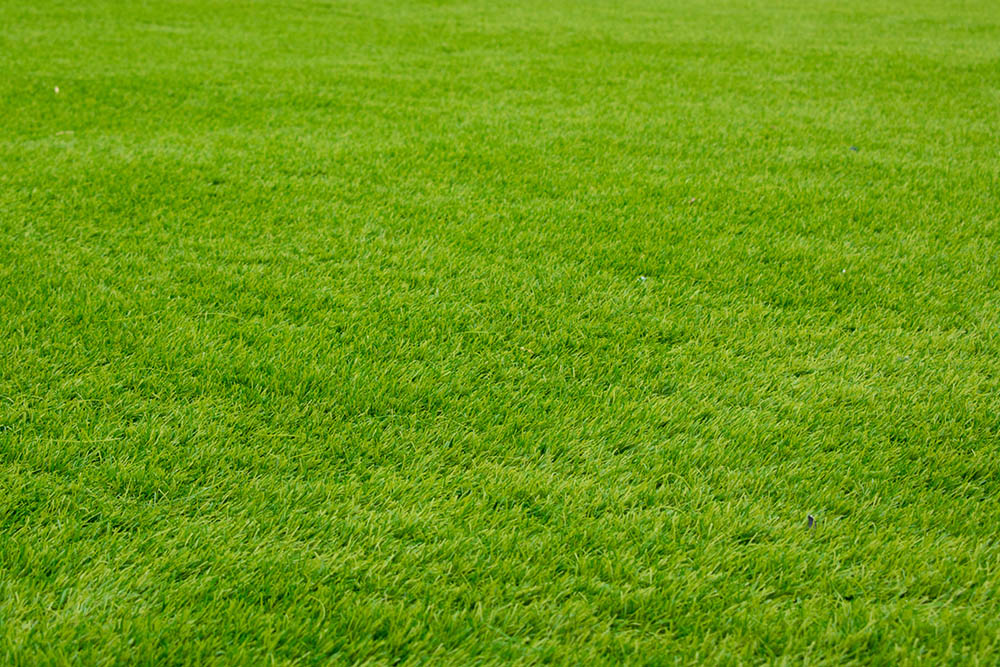
FAQ
What is overseeding?
The practice of seeding an existing lawn is called overseeding. There are two main reasons for doing this. The first is if you are growing warm-season grass and want the growth to continue through the winter. You’ll overseed with cold-season grass.
The other reason to overseed is if there are dead, brown patches on your lawn. This will cause new growth in those dead areas.
When should I overseed my lawn in Arizona?
Typically, the best time to overseed your lawn is in the first couple of weeks in October. Alternatively, you can wait until the nighttime temperatures consistently dip below 65°F.
Which grass stays green all year round?
Bermuda grass is one of the most common varieties found in Arizona because it will stay green and keep growing all year round in most parts of the state as long as you keep watering it.
Conclusion
There are several grass choices for your Arizona yard. If you’re looking for something that will potentially stay green year-round without reseeding, Bermuda grass or one of its hybrids is a great choice.
But if you’re willing to overseed or don’t care about dormant grass in the winter, any of these grasses will be a great choice.
- https://www.evergreenturf.com/best-grass-arizona-lawns.php
- https://www.lawnstarter.com/blog/az/phoenix/the-best-grass-types-for-lawns-in-phoenix-az/
- https://lawnlove.com/blog/best-grass-types-phoenix/
- https://www.gardeningknowhow.com/
- https://www.naturesseed.com/grass-seed/how-to-choose-the-right-grass-seed/
- https://www.evergreenturf.com/lawn-care/fall-over-seeding.php#:~:text=The%20optimum%20time%20to%20over,you%20will%20love%20the%20results.
Featured Image Credit: AVN Photo Lab, Shutterstock
Contents


